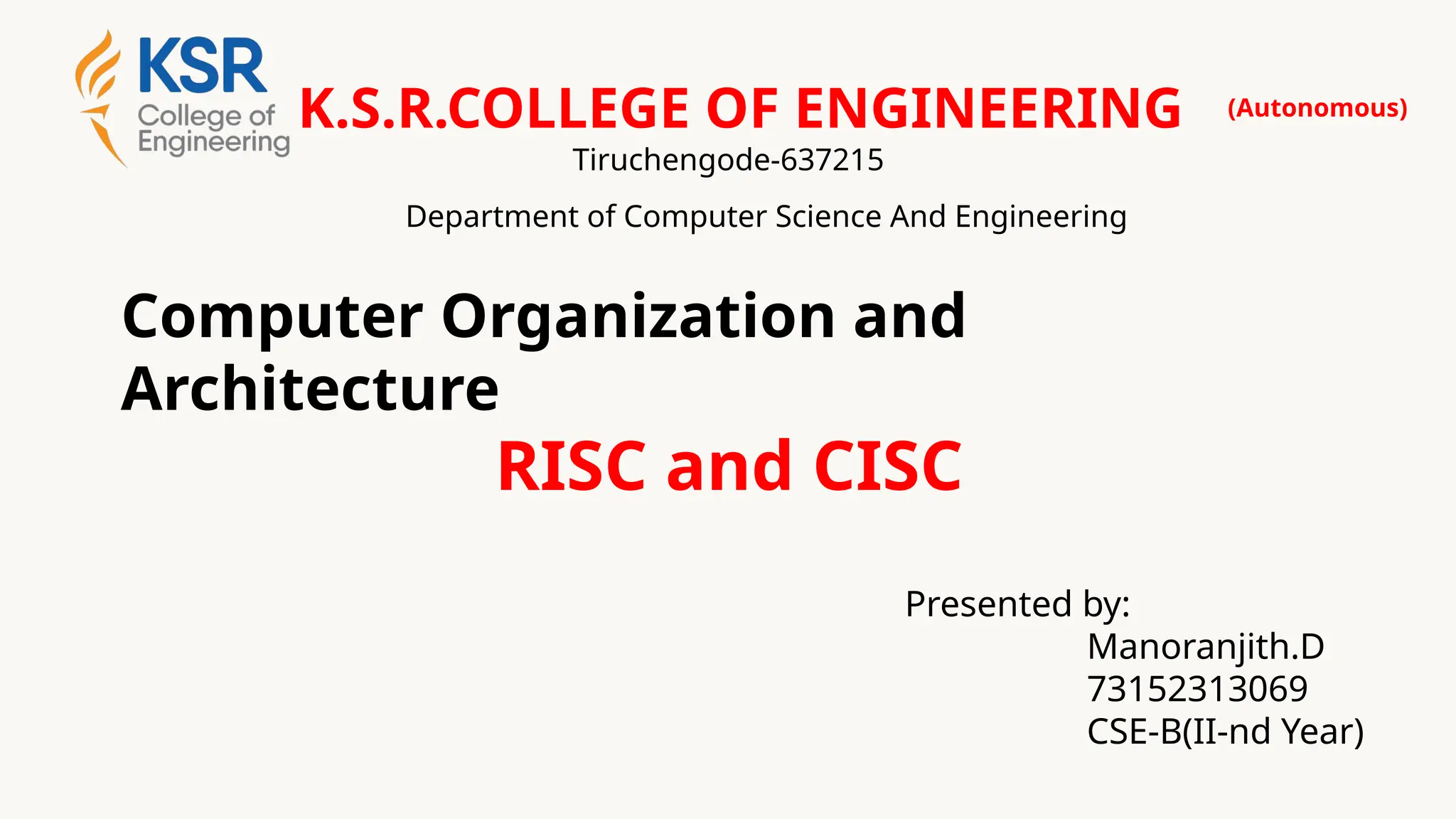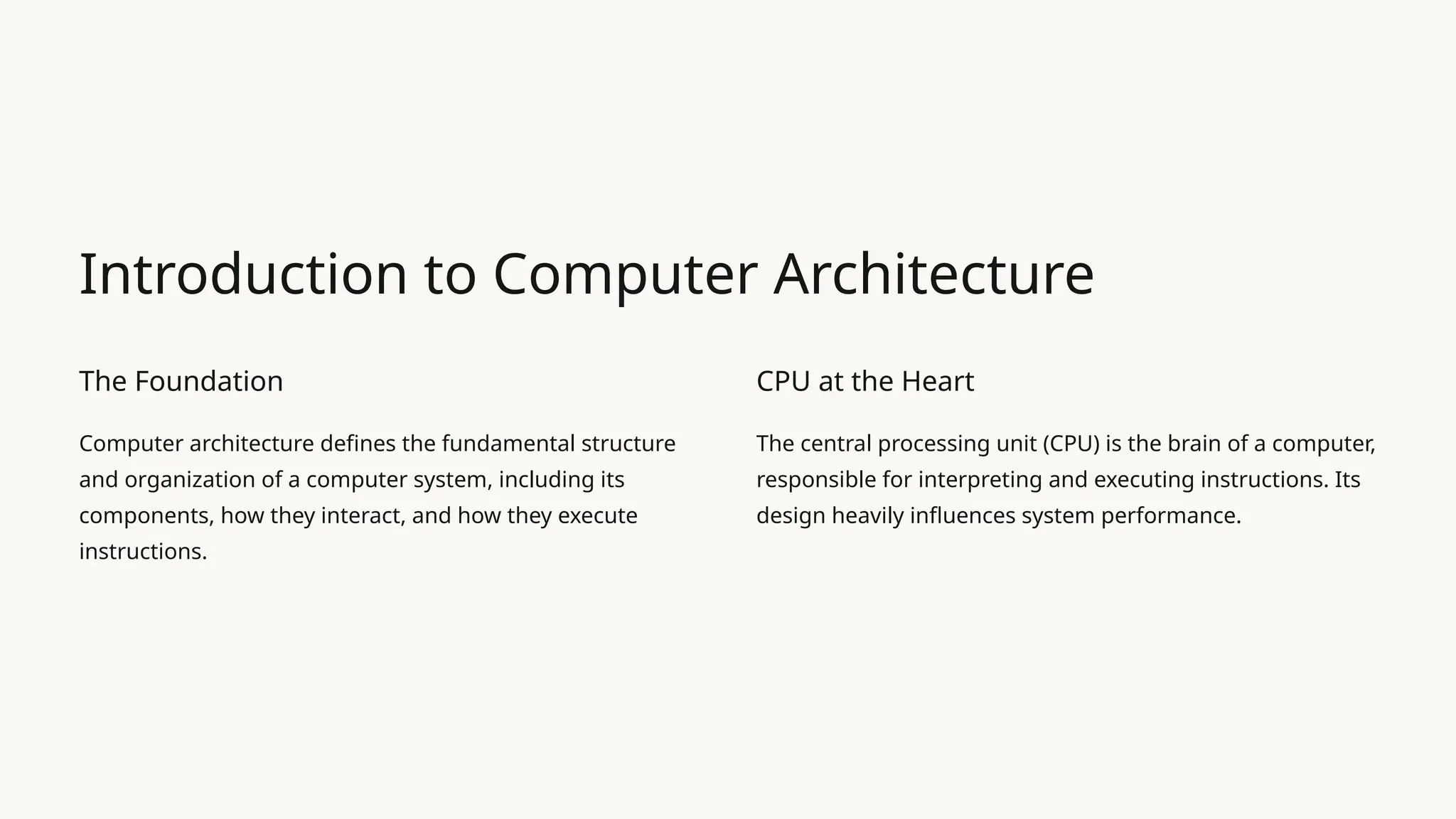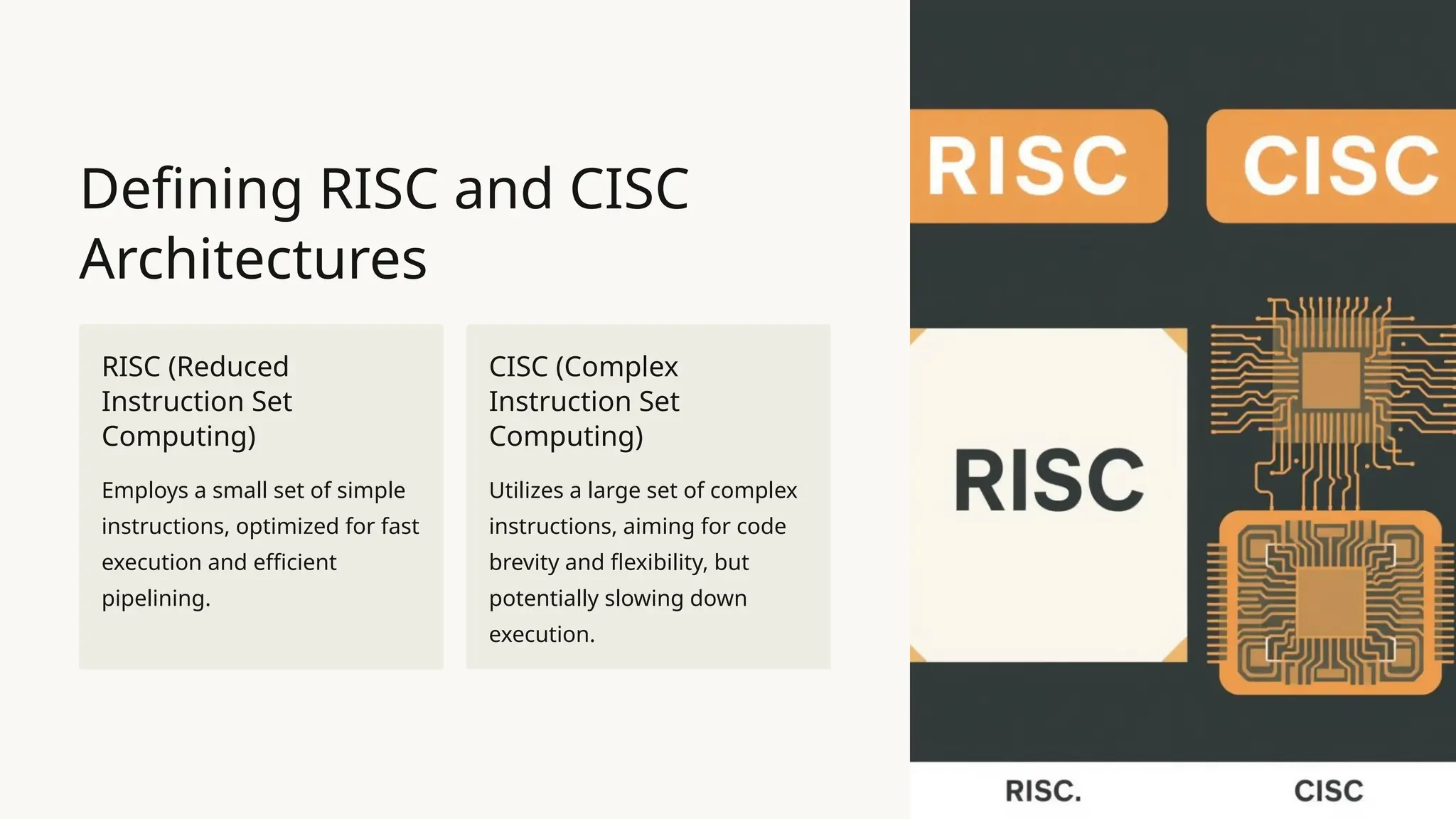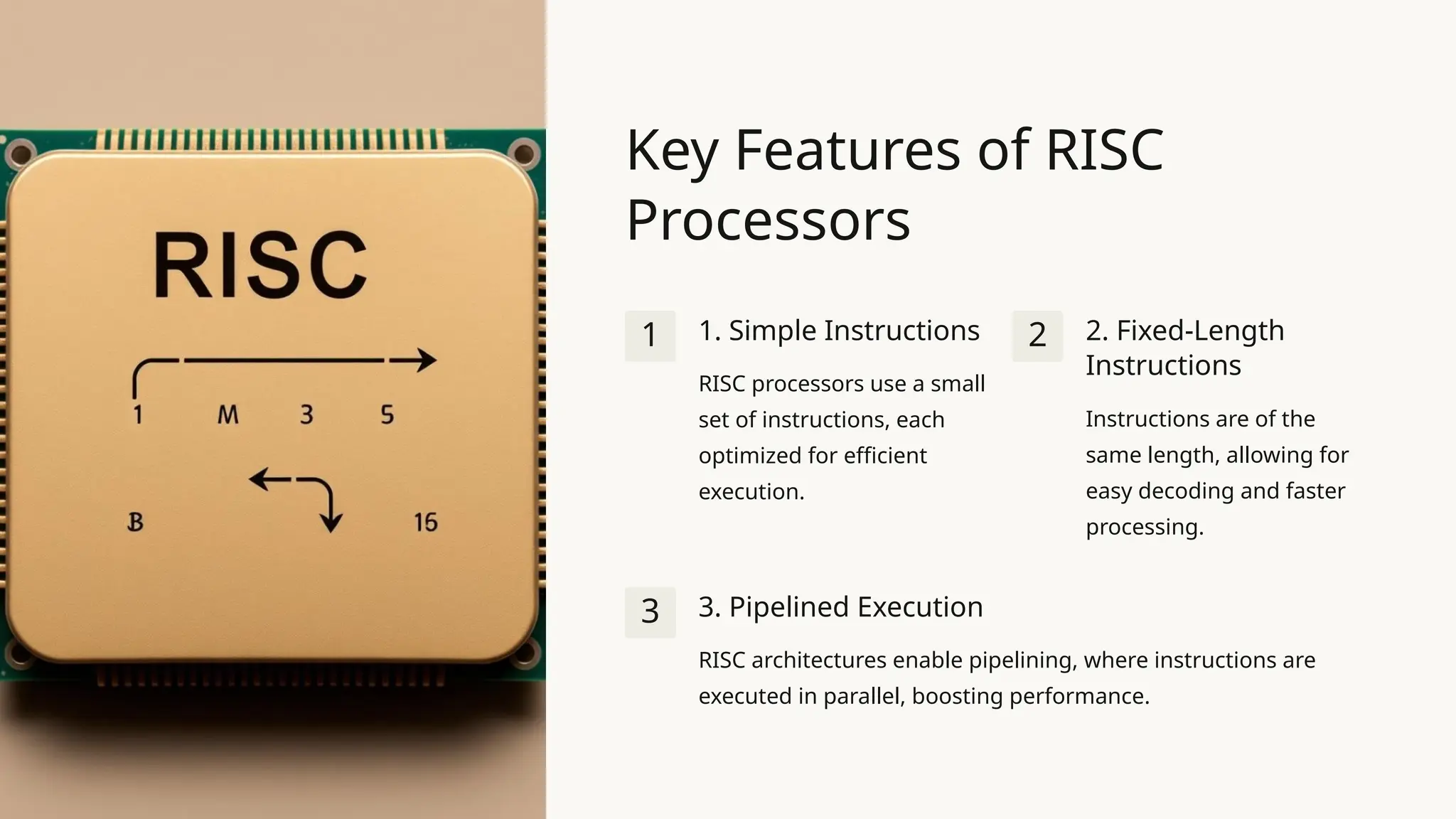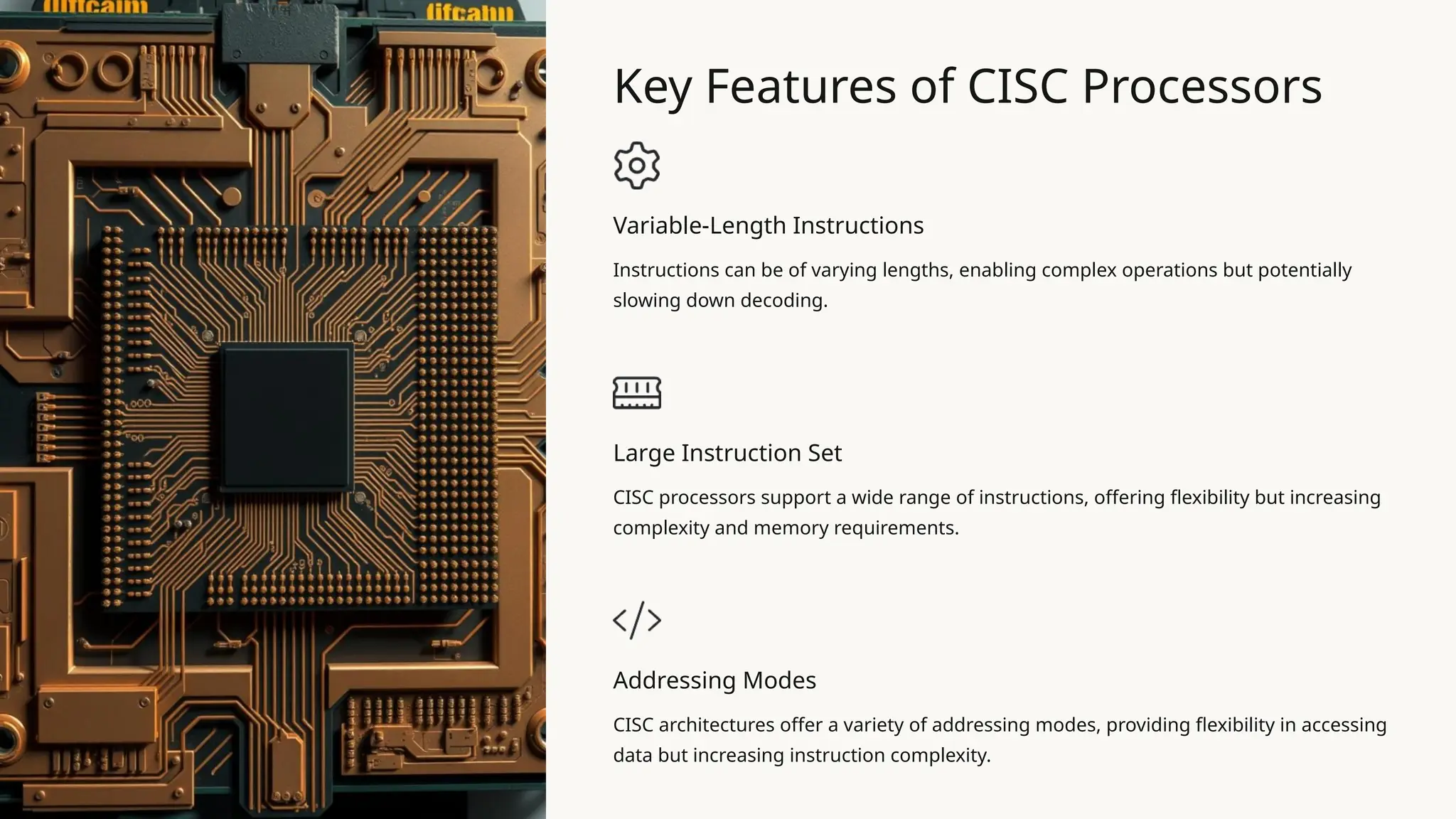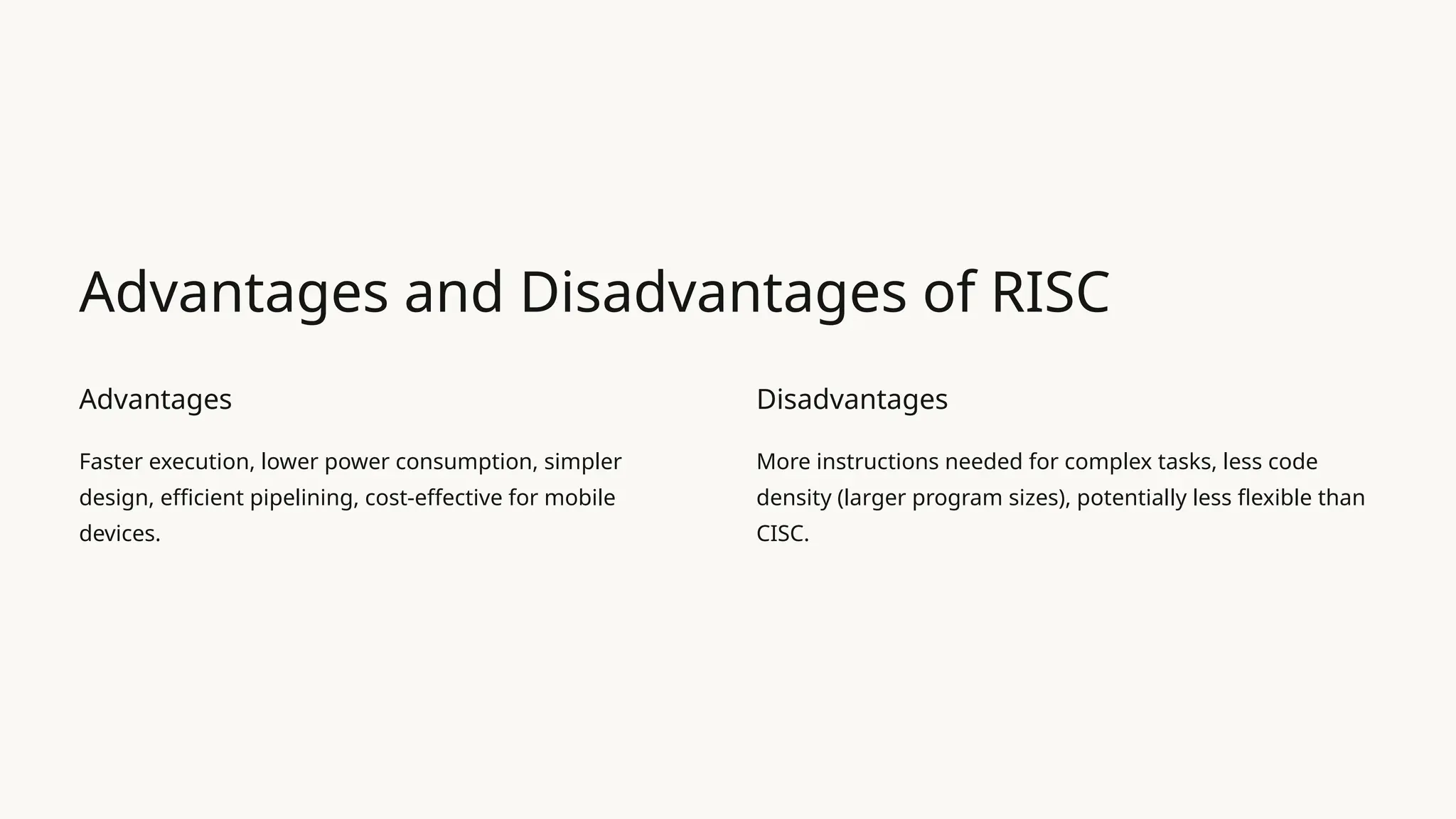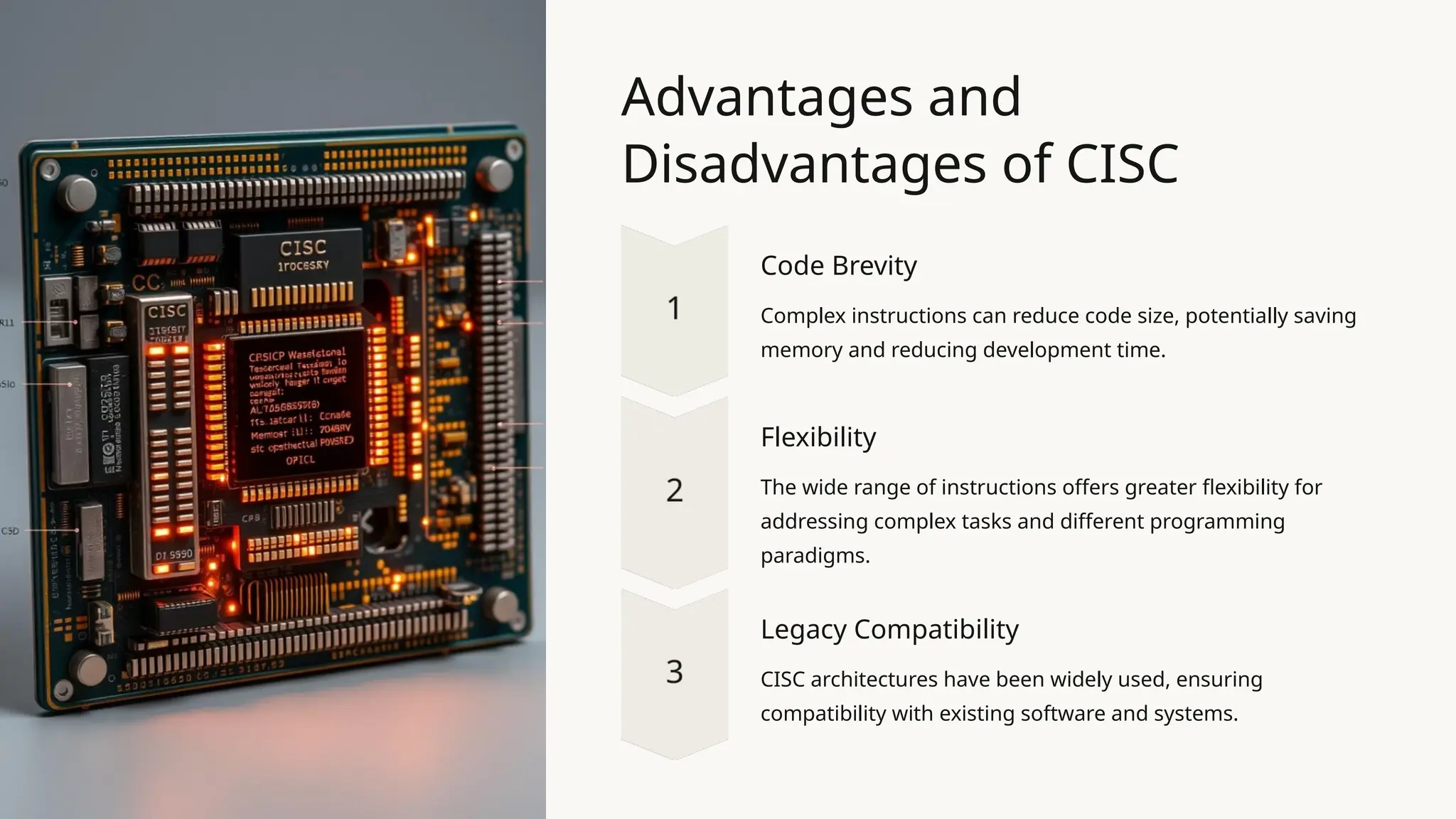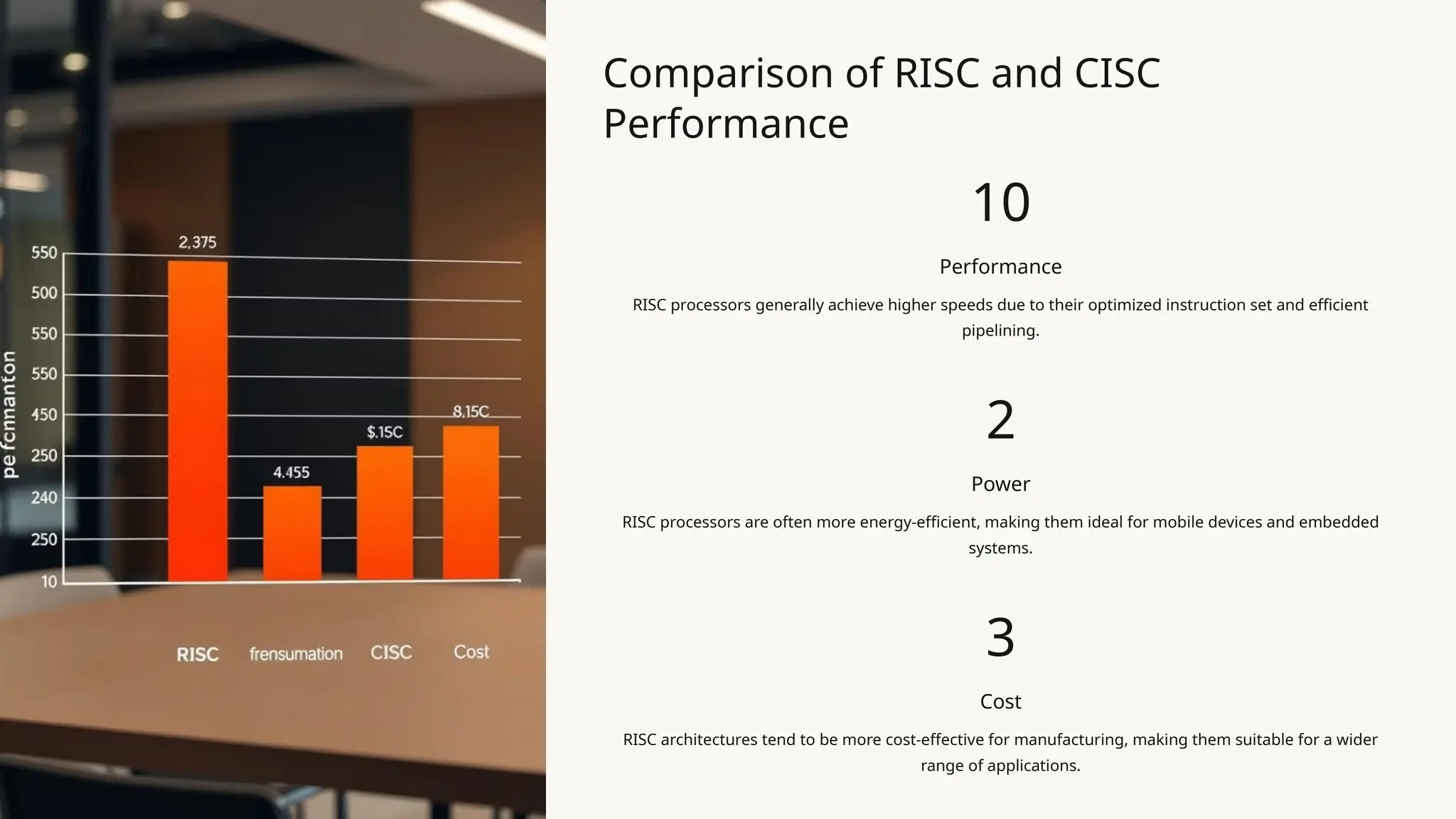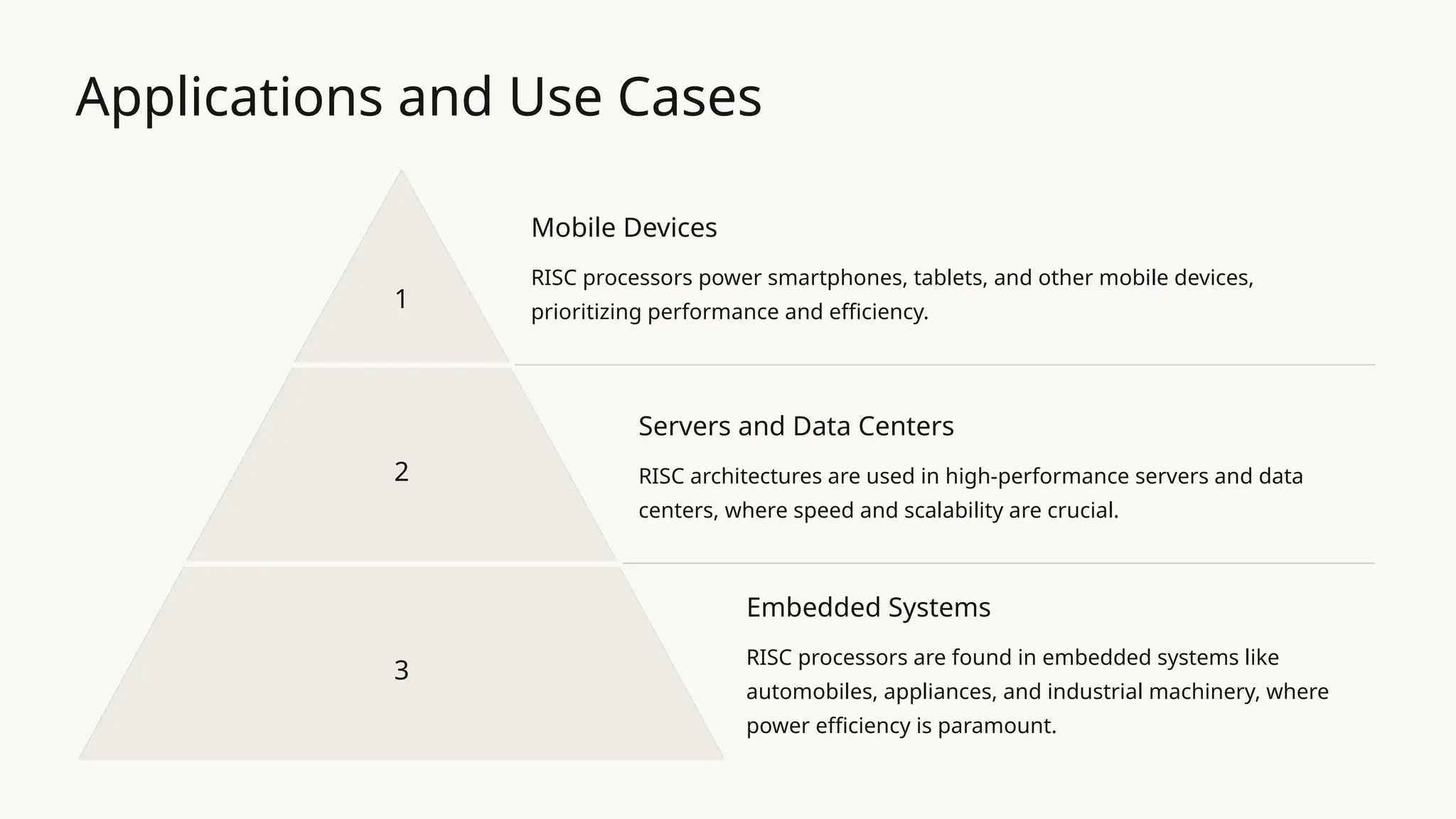The document presents an overview of computer architecture, focusing on RISC (Reduced Instruction Set Computing) and CISC (Complex Instruction Set Computing) architectures, detailing their characteristics, advantages, and drawbacks. RISC emphasizes fast execution and efficient pipelining with a small set of fixed-length instructions, while CISC offers a large set of variable-length instructions for flexibility but can compromise execution speed. The document also explores applications of both architectures in mobile devices, servers, and embedded systems.
